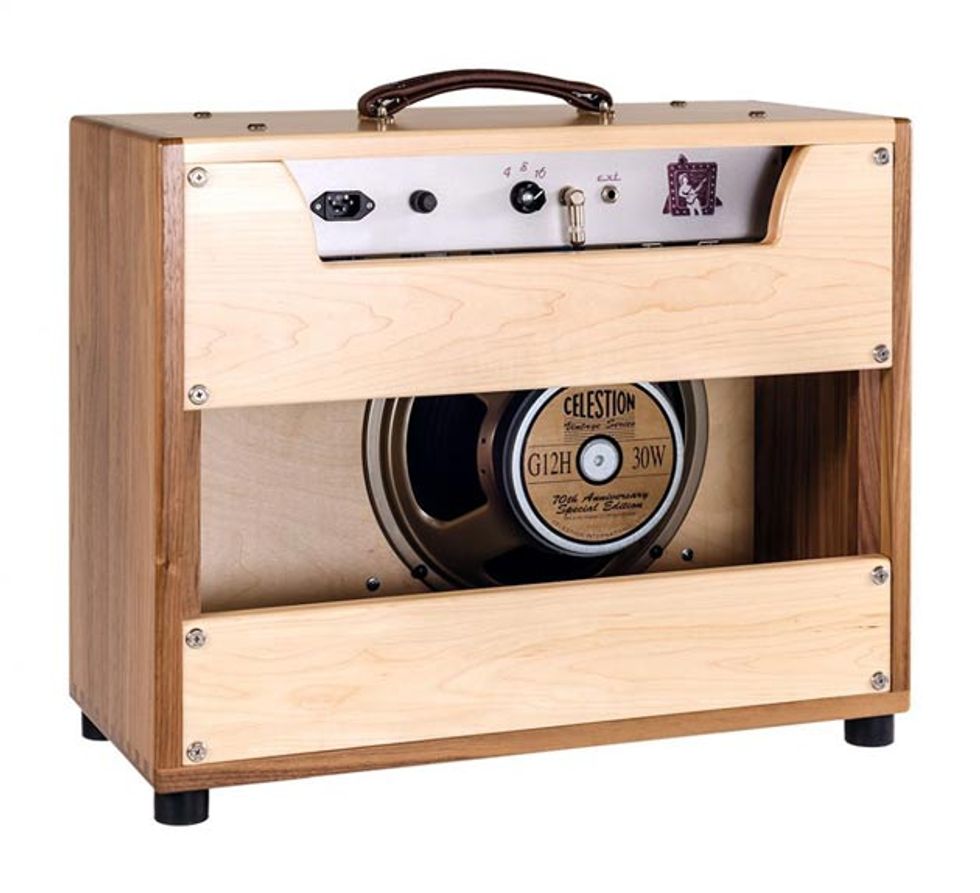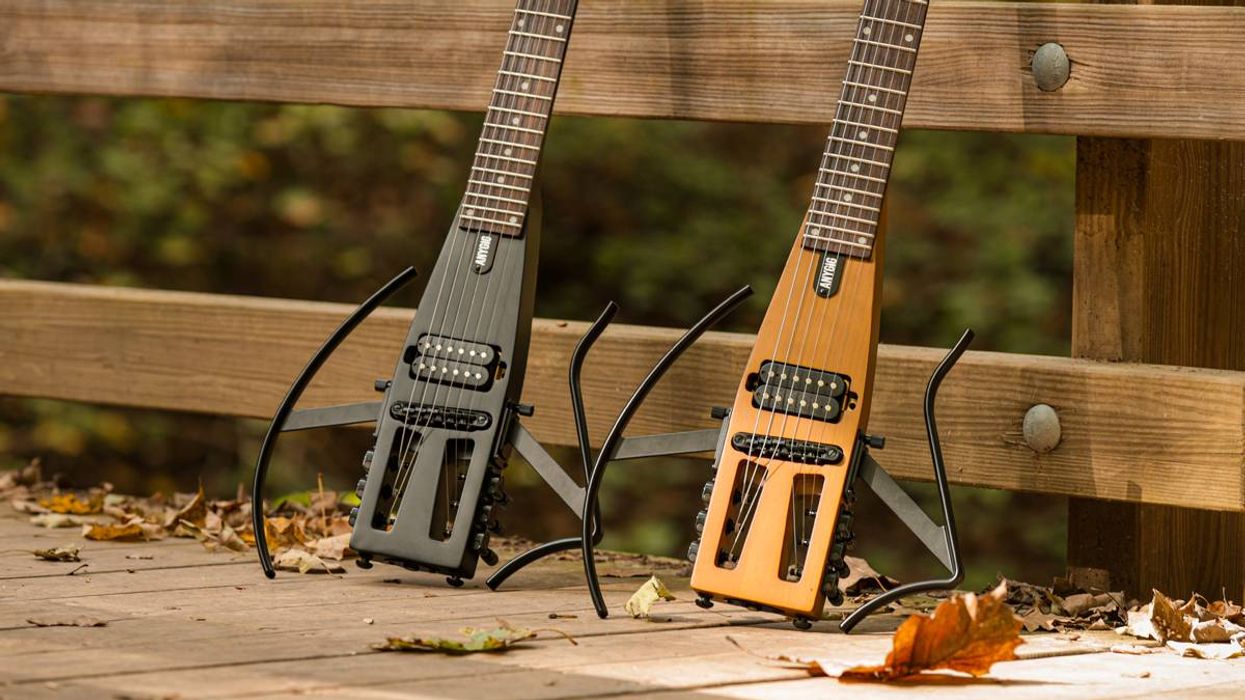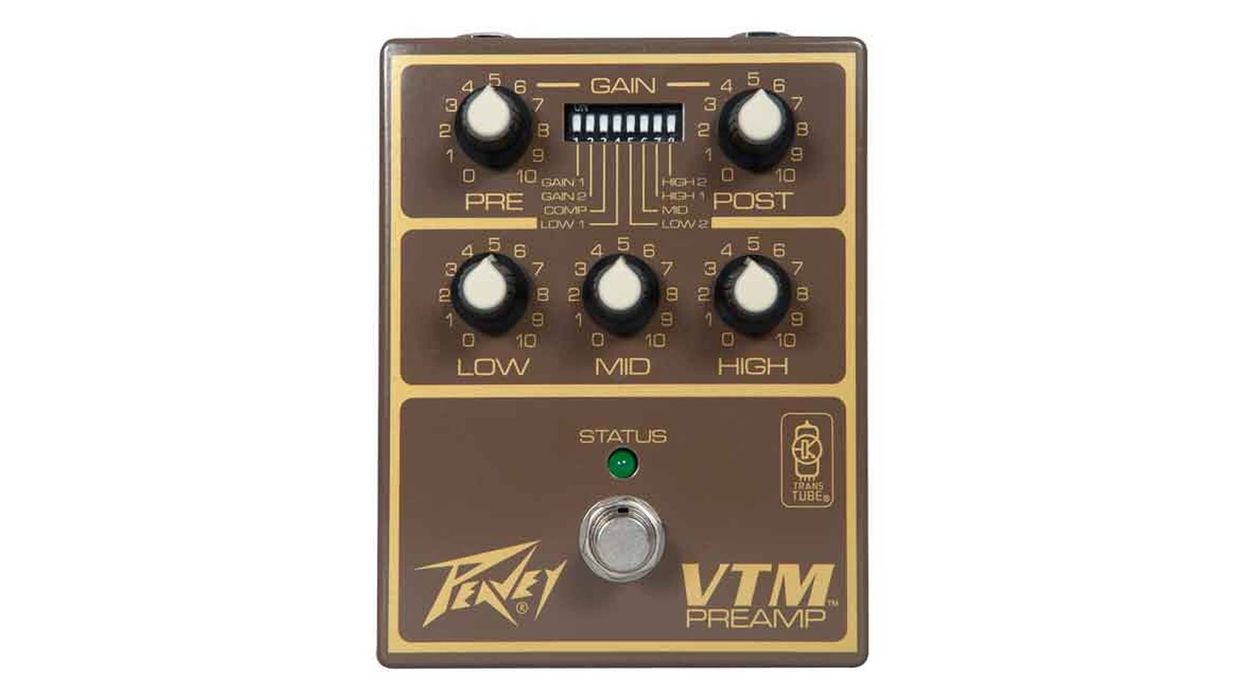For some guitarists, dynamics are binary—they play squeaky-clean or full-on filthy. Others prefer walking the tightrope between dirty and clean, tilting one way or the other from note to note.
Tightrope walkers are likely to love the Beale St., the flagship model from Toneville, a new amp line based in Colorado Springs. It’s a 15-watt, 1x12 combo inspired by the mid-sized Fender combos of the ’60s, but with some very cool twists.
Fine Furniture
You can’t judge an amp solely by its looks, but man, it’s tempting here. The Beale St.’s solid wood cabinet is stunning, with a hard maple front and back, black walnut sides, and beautiful dovetail joints uniting the two. Equally handsome are the 1950s modernist lines, clean-looking control panel, and backlighted logo. It’s the sort of object you might enjoy solely as furniture.
The components, hand-wired on an eyelet board, include custom hand-wound transformers (similar to the ones used in original Matchless amps) and other audiophile bits. There are stellar new-old-stock tubes, including a matched pair of RCA 6V6s, with RCAs or Mullards in the other slots. The speaker is a Celestion Heritage Series ceramic 30-watt G12H(55), a custom model optimized for low-end response, according to Toneville. It’s good stuff, enshrined in a masterfully crafted enclosure.
Bright but Sweet
The Beale St. is bright—markedly brighter than, say, a blackface Deluxe, especially a well-worn vintage one. But it’s an incredibly sweet-sounding brightness, with lovely chiming overtones at all settings. It’s the kind of brightness you embrace with both arms—intense, but never wince-inducing. Playing a vintage Strat (with a bridge pickup can get shrill), I never found myself avoiding the pickup or restraining my attack. Same with the unpotted, vintage-style PAFs in my Les Paul—I got great crackling twang, but the tones are balanced and musical. The Beale St. doesn’t sound precisely like a Matchless, Dumble, or Trainwreck, but like those amps, it excels at electrifying highs. At times, it’s like playing a Tesla coil.
I generally use roundwound strings to record the demos accompanying the online versions of reviews, since they’re what most players prefer. But I couldn’t resist including a flatwound-strung Trussart among the clips because I adore how the Beale St. responds to flats. You get the firm, focused fundamentals you expect from those strings, while sacrificing relatively little treble animation. Who says flats can’t twang?
Blues and Beyond
The overdrive is equally impressive. As with most dual 6V6 amps, you don’t need to floor the volume to get great distortion. But here there’s an uncommonly wide window between clean and crunch. Not many amps make it this easy to sculpt distortion with touch alone. (While recording the posted demos, I sat across the room from the amp, never touching the controls and varying the sound via touch and volume pot.) I wouldn’t call the overdriven tones “fat,” exactly—that word suggests weighty lows and rounded highs. This is more of a tall, crashing wave. The word “glorious” springs to mind.
Like its Memphis-inspired name suggests, the Beale St. would make a fine blues amp. But don’t think of it as strictly a roots-music instrument. Its bright, vibrant tones could serve with honor in many styles.
Set the Controls for … Wherever
The front panel controls include—eh, who cares? Just poke at some knobs and play.
Just kidding—but only a little. No matter where I set the knobs, something inspiring leapt from the speaker. As on Matchless amps, the ranges of the bass, middle, and treble are more restricted than usual. Even with the treble knob all the way down, for example, tones aren’t excessively dark. It’s truly difficult to summon bad sounds. For a great tone, just set the knobs near noon. For other great tones, move them around. It’s that simple.
Regardless of knob settings, tones are crisp and articulate, even at high volume. Notes snap like mousetraps. The Beale St. doesn’t do “mushy.”
Negative—or Not
Most amps employ the technique of feeding a bit of negative signal back into the circuit near the input for tighter, more stable tones, though disconnecting this negative feedback loop is a popular mod/boutique technique. Doing so usually creates a more explosive and dynamic sound at the cost of some low-end focus.
Ratings
Pros:
Pros: Superb tones. Superb workmanship. Superb materials. Superb for days.
Cons:
Cons: No reverb, trem, or effect loop. Not cheap.
Tones:
Playability/Ease of Use:
Build/Design:
Value:
Street:
$2,495
Toneville Beale St.
tonevilleamps.com
The Beale St. isn’t the first amp use a knob to fade between feedback and non-feedback modes, but it’s the first one I’ve tried, and I love the feature. I hung out mostly in the no-feedback zone, relishing the way it makes the amp’s explosive response even more extreme. But I can imagine varying the setting on a part-by-part basis in the studio.
Masterful Volume
Many players rightly distrust master volume controls—whacking the preamp isn’t the same as playing wide-open. But the Beale St. boasts an uncommonly good-sounding master volume circuit, providing studio-quality crunch tones at relatively low volumes. It’s accessible via push/pull pot, so it’s not in the circuit when you don’t need it.
But you might. The amp is biased hot, and it’s remarkably loud for a 15-watter. I’d have no hesitation using it onstage with drums, even with a heavy hitter and crappy monitors. It’s definitely loud enough to annoy your neighbors and pets, if not literally torture them.
The Verdict
Yes.
What, you want a longer verdict? Sigh. The Beale St. looks and sounds amazing. The highs are electrifying. The lows are stout. It boasts many cool tones and no crappy ones. Guitarists who cherish supreme dynamic response and the ability to play the amp like an instrument will flip their wigs. (Yes, their wigs will literally rotate 180°.)
I’m no poultry expert, but two-and-a-half grand ain’t chicken feed, especially for a low-wattage combo without reverb, tremolo, channel switching, or an effect loop. Yet the materials and craftsmanship are exceptional. The cabinetry is practically peerless, and the NOS tubes alone would cost hundreds of bucks. Dare I call the Beale St. a bargain? It certainly merits our Premier Gear Award.

















![Rig Rundown: AFI [2025]](https://www.premierguitar.com/media-library/youtube.jpg?id=62064741&width=1245&height=700&quality=70&coordinates=0%2C0%2C0%2C0)












 Shop Scott's Rig
Shop Scott's Rig